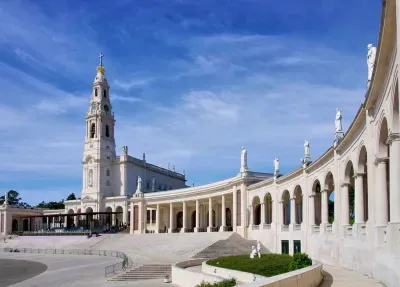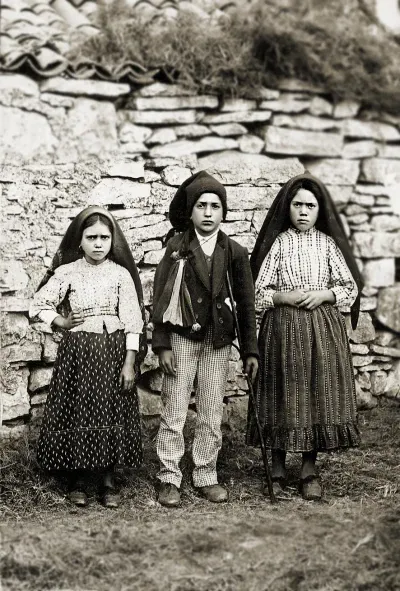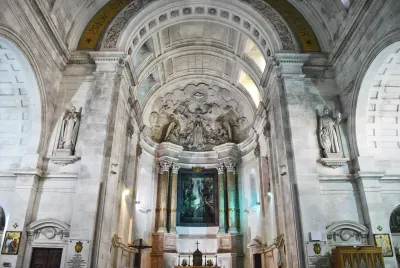
Once a tiny village in the hills of Santarém between Lisbon and Oporto, Fátima is now town of around 10,000 people globally renowned for the religious visions which took place here in 1917 and which have made it an important pilgrimage centre for the Catholic faith. Interestingly, given its now super strong links to the Catholic Church, name Fátima itself originates from a Moorish girl’s name. Legend tells us that in the eleven hundreds, a girl of that name converted to Catholicism in this region and her name was transferred to the village.

The visions which placed Fátima on the map were witnessed solely by three shepherd children. Cousins Lucia, Francisco and Jacinta experienced six monthly visions of Our Lady in all, during which three secrets of mankind were revealed to them, secrets which were to be considered prophesies regarding such events as The Second World War, the rise and fall of communism and the assassination attempt on Pope John Paul II. The final apparition was accompanied by a miracle witnessed by 70,000 people involving strange light emanating from a ‘dancing sun’. Two of the Pastorinhos, Francisco and Jacinta succumbed to the post WW1 flu epidemic, however Lucia lived a devout life as a Carmelite Nun until 2005 and will doubtlessly receive the same honour as her cousins and be beatified in due course.
Money amassed at the time of the apparitions from hopeful souls seeking forgiveness and cures to illness built the original chapel in honour of Our Lady in the place where she is said to have appeared. Now a replacement of this chapel, dynamited by sceptics in the early 20’s, is part of a much larger complex, the Sanctuary of Fátima. Upwards of four millions pilgrims visit every year, some for festive occasions in the Catholic calendar and others to fulfil promises made to Nossa Senhora. The most popular days are the 13th of the month between May and October, marking the apparitions, days on which the faithful descend in droves on the small town. Fortunately the main square of the sanctuary is larger than that of St Peter in the Vatican and can accommodate thousands. Many still come on foot or even on their knees in penance, and all wave a handkerchief as a statue of Our Lady is carried among the throngs. The evening torch-lit processions are also considered very special.

The neo-classical limestone Basilica dominates the immense square with its 65 metre tower and huge golden crown. Built in the first half of the last century, it houses the tombs of all three shepherds and a painting above the high altar denoting Our Lady passing on her messages to the children. The 15 mysteries of the Rosary are represented in the 15 other altars and statues of saints abound both inside and out. In the Chapel of Apparitions we find the crown of the Virgin now adorned with the bullet used in the assassination attempt on Pope John Paul II in 1981, his survival of which he attributed to Our Lady of Fátima.
Other sights include the large Holm oak tree, under which the children would await the visitations and a segment of the Berlin Wall, to mark the connection between the visions and the fall of communism.
Elsewhere in Fátima the Sacred Way is a peaceful walk lined with 15 small chapels following the path the little shepherds would have taken, and nearby stand their homes.


